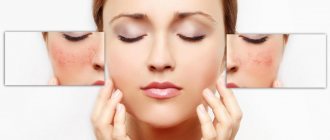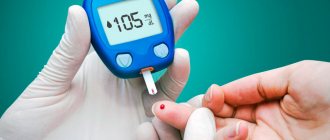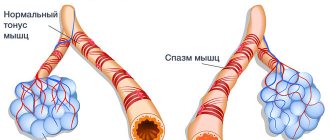Parkinson's disease primarily affects older people. Treatment of the disease can be carried out at home under the supervision of a doctor at a local clinic. What treatments are available to patients at home? This includes the formation of a special daily routine, taking medications, and physical exercise. You can receive massage courses at home and perform some folk remedies and techniques.
About the causes and symptoms of Parkinson's disease
Despite the hundreds of years that have passed since the discovery of this disease, scientists still do not know why this disease occurs. There are four possible reasons:
- Inheritance of a pathological genotype (about 5-10% of patients received the disease from their parents). The gene is transmitted in an autosomal dominant manner with incomplete penetrance;
- Inheritance of predisposition to PD. For example, the risk of getting the disease doubles in people whose close relative suffered from this disease. Scientists explain this by the fact that in the absence of a direct mutation, the body of such a patient is more sensitive to harmful environmental factors, and the process of “neuron aging” starts earlier;
- Exposure to toxins (herbicides and pesticides). In people who frequently come into contact with these chemicals, the incidence of illness according to statistics is 1.5 times higher;
- Aging. Some people have fewer dopamine neurons, which can die during life. Therefore, symptoms of PD may be noticeable in them earlier.
Symptoms
The symptoms of the disease are known to many. First of all, we are talking about involuntary tremor, which is the “calling card” of the disease. But this is far from the complete picture:
- Muscle rigidity - stiffness;
- Bradykinesia – slowness in movements;
- Inability to maintain body position in space – postural disorders;
- Tremor.
In addition, there is a set of signs that accompany the disease:
- Depression;
- Anxiety;
- Insomnia;
- Problems with swallowing;
- Constipation;
- Urinary incontinence;
- Orthostatic hypotension (a drop in blood pressure when rising from a sitting or lying position);
- Sweating of the skin;
- Dry mucous membranes.
Causes of the disease
Today, medicine has a lot of knowledge in the biochemical and molecular mechanisms of this disease, but the true causes of Parkinson's disease remain unknown to this day. The main assumptions about the occurrence of the disease are as follows:
- Hereditary predisposition
- Age-related changes
- External environment - unfavorable ecology, influence of heavy metals, toxic substances, viruses, infectious diseases
Age is considered the only understood risk factor for the disease; the older the person, the higher the likelihood, especially when combined with a hereditary predisposition. In 5-10% of people with the disease, symptoms begin after age 50—an early-onset form of Parkinson's disease that may be associated with gene mutations. In the presence of sick relatives of PD, the risk of developing the disease reaches 25% in the population over 60 years of age; in the absence of a family history of PD, this figure is 1 - 5%.
- Men suffer from Parkinson's disease 1.5 times more often than women.
- In developed countries (possibly due to environmental factors), the incidence rate is higher - toxins in the air due to industrial development, powerful electromagnetic fields, radiation, and other unfavorable factors affecting the health of residents of megacities.
- Scientists, conducting surveys of Parkinson's patients, conclude that work associated with frequent or constant vibration reduces the risk of Parkinson's disease by 33% than professional activities not related to it.
- Scientists also suggest that possible triggers for the disease include viral intoxication, frequent head injuries and various chemical poisonings.
Researchers from Canada (University of British Columbia) claim that complications from the flu double the likelihood of a person developing Parkinson's disease in old age. Scientists have also found that those who have had measles, on the contrary, reduce the risk of the disease by 35%.
The causes of the disease also depend on the type:
- Primary parkinsonism is caused by a genetic predisposition in 80% of cases.
- Secondary parkinsonism occurs against the background of various pathologies and existing diseases.
The most common pathologies that are provoking factors in the development of secondary parkinsonism are the following:
- A brain tumor
- Atherosclerosis of cerebral vessels, threatened by stroke and dyscirculatory encephalopathy
- Chronic hereditary diseases
- Frequent traumatic brain injuries
- Poisoning with industrial alcohol, manganese, cyanide, carbon monoxide
- Taking antipsychotics and certain other medications
- Past encephalitis
- Addiction
Parkinson's disease occurs due to the destruction of brain cells whose function is to synthesize the neurotransmitter dopamine, so the brain begins to lose the ability to transmit impulses to the muscles of the body.
If we delve into the deep processes of disorders in the brain, we can state the following: the development of the disease is associated with a decrease in the activity of inhibitory dopaminergic neurons in the “substantia nigra” and “striatum” (neostriatum) - sections of the basal ganglia of the brain that are responsible for the control of movements.
Normally, neurons of the substantia nigra send their processes to the striatum. Dopamine is released at their synapses, which inhibits the neostriatum. The processes of neurons going in the opposite direction, through GABA (gamma-aminobutyric acid), suppress the activity of the substantia nigra. This complex system represents reciprocal inhibitory pathways that “filter” motor impulses. Dopaminergic neurons of the substantia nigra die in Parkinson's disease, which leads to movement disorders.
How can you tell if a loved one has Parkinson's disease?
Despite the fact that the disease develops a characteristic clinical picture, it is rarely possible to establish a diagnosis at the initial stage of the disease. This is because Parkinson's often resembles other diseases. And many even write off new symptoms as signs of old age. Is it possible to test a relative at home? What tests for Parkinson's disease can be done at home?
An objective examination by a neurologist is necessary to confirm the disease. But now it is possible to get tested at home. Based on its results, it will be possible to purposefully contact the necessary specialist, and not go in a “big circle”.
And the first method is an online test that allows you to assess a person’s cognitive and neuropsychological indicators. It is paid and available on the website. The test assesses the likelihood of having the disease and the likelihood of symptoms occurring in the future based on indicators of sleep, psychological state, movement and motor skills, speech function, and the preservation of cognitive skills. Of course, testing is not a substitute for seeing a doctor. Based on the diagnostic results, you will not be prescribed treatment for the disease. However, this will allow you to confirm or refute suspicions and plan a visit to a specialist.
In addition, various questionnaires can be used. This is a list of questions that are answered either by the person himself or his relatives. Based on the answers, we can conclude whether the symptoms are pathological. A more thorough examination (motor, cognitive and other impairments) should be performed by a doctor during an examination in a clinic.
Parkinson's disease questionnaire
Let's give an example of a questionnaire.
Mandatory symptoms:
- Do you experience a feeling of “stiffness” in the morning?
- Do you have problems maintaining balance?
- Do you notice tremor in one of your limbs?
- Do you notice that you have become slower in your actions and movements?
Non-motor disorders:
- Do you experience increased salivation during the day?
- Do you smell well?
- Do you feel periodic bouts of sadness?
- Do you feel constant anxiety?
- Do you suffer from insomnia?
- Do you have problems with sex?
If the patient answers “yes” to more than 1 item from the first task or collects more than 3 positive answers in the second part, then he should be seen by a doctor.
Where to go if you suspect Parkinson's disease?
The initial consultation takes place with a local internist, general practitioner or family doctor. These specialists should evaluate the results of an objective examination and refer the patient further. However, the therapeutic service may not always notice motor disorders in an elderly patient. Therefore, an in-person consultation with a neurologist at a clinic, extrapyramidal pathology center or private clinic will allow you to form a final conclusion: whether there are signs of the disease or not.
Attention! Where to go if you suspect Parkinson's disease? This could be a local clinic (neurologist), a center for extrapyramidal pathology, or a parkinsonologist at a frequent clinic.
What tests are prescribed for Parkinson's disease?
Most often, the diagnosis is formulated on the basis of an in-person examination of the patient. In this case, the doctor assesses the level of motor impairment, sets the stage according to the Hen-Yahr classification, determines cognitive deviations and non-motor manifestations of the disease. For this purpose, neurological tests, interviews, and collection of anamnesis of the disease are used. General clinical examinations are required, which allow us to understand the level of somatic pathology of the patient.
Specific tests for Parkinson's disease are required when the diagnosis is in doubt. There will be no specific changes on MRI and CT, but PET or scintigraphy assessing dopamine transport will make it more likely to talk about the presence of degenerative changes in the substantia nigra of the brain. However, these examinations belong to high-tech diagnostic methods. In routine practice they are used quite rarely.
Important! To diagnose Parkinson's disease in an elderly person, an in-person examination by a neurologist is sufficient. It can be done at home if the patient has difficulty moving.
Treatment with drugs
Among neuroprotective drugs, the following groups should be distinguished:
- Antioxidants (including mexidol, glutathione, thioctic acid).
- Growth factors of nervous tissue (brain and glial growth factors).
- Calcium channel blockers.
- Dopa receptor agonists (are drugs related to both lines of therapy).
However, these drugs have not become widespread in the treatment of the disease due to the steady progression of all symptoms and insufficient data on the leading mechanism of development of the disease.
That is why symptomatic therapy is of leading importance in the treatment of Parkinson's disease. Drugs in this group make it possible to significantly (and in the initial stages completely) stop the manifestations of the disease, maintain the social activity of patients, and reduce the risk of complications. However, drugs in this group must be taken continuously throughout life.
There are five lines of symptomatic therapy, and each of them should be briefly considered.
- Increased production of endogenous dopamine. It is achieved by taking the precursor of dopamine - levodopa, because pure dopamine is not able to penetrate the blood-brain barrier. Levodopa preparations have been used in the world for more than half a century. Moreover, according to statistics, before the invention of drugs in this group, the life expectancy of patients was about 9-10 years. Now the life expectancy of patients, with adequate therapy and supervision, practically does not differ from that of the average population. Levodopa therapy currently plays a vital role in the treatment of the disease. There are dozens of drugs (the most famous are Naokm, Madopar, Stalevo, Duellin, etc.). Some limitation on the full-scale use of levodopa drugs is the frequent side effects. They can be divided into early and late:
— Immediately after taking the drug, side effects from the central nervous system, as well as other systems and individual organs, often develop. These can be headaches, visual disturbances, mood changes, constipation, hypotensive reactions and much more. As a rule, such manifestations are especially noticeable in the first days of prescribed therapy. In case of pronounced negative reactions, the dose should be reduced to a minimum and then gradually increased to the desired effect.— Late negative reactions appear 5-8 years from the start of treatment. Among them, violent movements, the effect of lack of dose, and dysfunction of dopa receptors are most often present. Sometimes persistent mental disorders develop, including the development of hallucinations. These effects require close attention from a doctor. Sometimes you have to give up the drug you are using, or reduce the dosage and switch to a combination of drugs from different groups.
- The second line of possible therapy is to stimulate the release of dopamine. The most commonly prescribed amantadine is 100-200 mg. Also, using drugs from this group, it is possible to stop many unwanted drug reactions that occur when taking dopa-containing drugs. The best effect is achieved with the rigid-tremorous form of Parkinson's disease. The drug should be prescribed carefully to patients with kidney disease; sometimes drugs in this group lead to the development of edema.
- The third treatment option is the use of dopamine receptor agonists (stimulants). Medicines in this group are classified into ergoline and non-ergoline agonists. Among the ergoline drugs, the most famous is bromocriptine, which has found greater use in gynecological practice, and is rarely used as a drug for the treatment of Parkinson's disease. Non-ergoline drugs are widely used, among them the following drugs should be noted: mirapex, pronoran, requip-modutab. The advantages of the drugs are their good effect on all symptoms of patients, the presence of a slight antidepressant effect. The disadvantages are relatively frequent side effects.
- Drugs that inhibit the reuptake of dopamine (cyclodol, akineton, etc.) are used relatively rarely. This is due to pronounced side effects, primarily from the mental sphere. Tricyclic antidepressants (the classic representative is amitriptyline) can be used as drugs of this type of action, if necessary.
- The drugs of the latter group inhibit the destruction of dopamine. Among them are the drugs selegiline, umex, entacapone. The latter, in turn, is used in the combination preparation stalevo.
Currently, the following drug therapy regimen has been developed: In the early stages of the disease, neuroprotection can be used as the only means of treatment. The prescription of symptomatic therapy for Parkinson's disease depends on age:
— If the patient is under 50 years of age, it is necessary to initially prescribe amantadine or a drug from the group of dopamine receptor agonists. - Age 50-70 years - treatment should be started with dopa receptor agonists or amantadine. — Age over 70 years is an indication for prescribing levodopa.
If the effect of monotherapy is insufficient, a combination of drugs is resorted to.
Neurosurgical treatment of Parkinson's disease is carried out when conservative therapy is ineffective, the appearance of motor fluctuations, drug-induced dyskinesias, and the rapid progression of manifestations of Parkinson's disease. The main type of intervention is the destruction of some structures of the thalamus and globus pallidus. Approximately 50% of patients note a persistent, pronounced positive effect, 25-30% experience slight positive dynamics, 10-15 percent do not notice an improvement in their condition, while the rest noted a deterioration, in some cases pronounced.
Taking medications at home
After making a diagnosis, the doctor prescribes drug therapy. As a rule, these are tablets or capsules that can be used at home. If there is a need for injection forms of therapy, then injections can also be received without leaving the apartment. Nurses will administer a course of injections as prescribed by your doctor if intramuscular medications are prescribed. As a rule, other manipulations are not necessary for Parkinson's disease.
Treatment regimen
Levadopa-based medications are prescribed for home use (for elderly patients). The doctor selects the regimen individually. This takes into account the patient’s activity, ability to care for himself, and drug tolerance.
At the initial stages, the drug is used in a minimal dose, after which it increases, reaching the optimal dose for a given person (when symptoms decrease, self-care is possible, there are no side effects). Over time, the scheme may undergo changes. Levadopa may be combined with other medications to reduce its side effects and reduce the dosage.
Main drugs for Parkinson's disease
| Group name | Tradename |
| Levadopa | Madopar (Levadopa + Benserazide) Capsules 100 mg+25 mg Tablets 200 mg+50 mg Sindopa (Levadopa + Carbidopa) 250mg+25mg Benziel |
| Dopamine agonists | Mirapex (pramipexole) 0.25 mg Newpro (rotigotine) Transdermal patch Requip Modutab (Ropinirole) |
| MAO inhibitors | Eldepril (selegiline) Tablets 5 mg Azilect (rasagiline) Tablets 1.59 mg |
| COMT inhibitors | Stalevo (entacapone) Tosmar (tolcapon) Tablets 100 mg, 200 mg |
| Amantadine | PC-merz 100 mg |
| AChE inhibitors | Exelon (rivastigmine) 9 mg, 18 mg, 27 mg |
Approximate drug dosage regimen
| 7 00 | Madopar 100 mg+25 mg +PC-Mertz 100 mg |
| 11 00 | Madopar 100 mg+ 25 mg |
| 15 00 | Madopar 100 mg + 25 mg + PC-merz 100 mg |
| 20 00 | Madopar 100 mg+ 25 mg |
| Dream | No drugs |
Who prescribes therapy?
Patients receive medications for Parkinson's disease free of charge based on a decree of the Russian government. Free prescriptions are issued by a primary care physician or neurologist at the outpatient facility to which the patient belongs.
In addition, medications can be purchased at full price when prescribed by a consultant at a private center or consulting room.
Question? Is it possible to get a free prescription for a drug at home? Indeed, with severe motor problems, some patients cannot attend an appointment. This is possible when contacting a therapist or general practitioner. To do this, the patient’s documents must contain the recommendations of a neurologist and a treatment regimen.
Drug treatment for Parkinson's disease is the only way to control symptoms and avoid severe deterioration. Tablets, capsules and other forms of drugs can be taken at home. But the treatment regimen is prescribed and monitored by the attending physician.
Means for cleansing blood vessels and relieving tremors
When treating Parkinson's disease at home using potent remedies from traditional medicine, it is important to combine the purposes of using certain mixtures. Cleansing blood vessels and relieving tremors is one of the advanced tasks during therapy. To do this, use recipes that contain garlic, oats, sprouted wheat, and fresh yellow lemons.
Here are some recipes:
- Oats . For 1 glass of unrefined grain, take 3 liters of boiling water. Boil over low heat for an hour, pour into a thermos. Strain after 7-9 hours. Take instead of tea, mixed with honey.
- Poisonous herbs . Use belladonna, wormwood, and hemlock strictly with the doctor's permission in the treatment of Parkinson's disease with folk remedies. With their help, they cleanse the blood and other body systems. To clarify the recipes, you need to consult a doctor, since therapy with toxic substances is dangerous.
You need to be treated with potent decoctions in courses; if poisonous herbs are used, they last no more than 2 weeks. In old age, you need to be especially careful when choosing funds.
Physical activity in Parkinson's disease. What can you do at home?
With this disease, it is important to maintain a sufficient level of physical activity. The movements send signals to the brain and allow neighboring cells to take over the functions of the dead. In addition, physical activity improves mood, promotes the development of muscles and joints, and mobilizes the cardiorespiratory system.
What does physical activity at home consist of?
- Morning exercises (physical therapy complex);
- Day walk;
- Skills training (postural instability, fine motor skills, speech gymnastics if necessary);
- An evening walk.
The duration of each activity depends on weather conditions and the patient’s well-being. You can add yoga to this routine, replace walks with Nordic walking, cycling or swimming. It is important that the exercises bring pleasure, then the patient is more willing to follow the doctor’s recommendations for physical activity.
Interesting! In the early stages, group dance classes or oriental gymnastics (qigong) are possible, and other types of collective activities are encouraged. Just before enrolling in a group, you should consult with your doctor.
Morning complex for Parkinson's disease
It is better to perform the first workout 30 minutes to 1 hour after taking the medications.
- Breathe deeply;
Place your hands on your stomach and feel how the abdominal cavity expands. Diaphragmatic breathing allows you to normalize intestinal function and relieve muscle spasms. We perform 10-15 breaths while sitting.
- We train the neck muscles;
To do this, we “throw” a look over our shoulder. Perform 10 repetitions to the right and left. We do the exercise smoothly and slowly, but we try to maximize the amplitude every day.
Next, we proceed to tilting the neck to the right and left. We take our time, but stretch the muscles, trying to touch the shoulder girdle with the shell of the auricle.
Let's start lifting the shoulders. They need to be brought as close as possible to the ears and held in this position for 5 seconds. We lift as we inhale, and relax the muscles as we exit. We do 10 repetitions.
- We train our shoulders;
Hands on the belt. We move our elbows back. Fix for 5 seconds. Let's go back forward and fix it for 5 seconds here too. Repeat 10 times. Each fixation is followed by a relaxation phase. It is advisable to combine it with a deep exhalation. Proper breathing improves muscle relaxation and prevents the formation of painful spasms.
Place your hands on your shoulder girdles. We perform torso turns with a fixed pelvis. You must make at least 10 movements to the right and left.
- We train posture and chest muscles;
In a sitting position, we bend forward with a fixed lower back. The task is to perform a deflection of the thoracic region. In the lower position we “freeze” for a few seconds and return to the starting position.
For the next exercise, take a gymnastic stick. We stretch our arms in front of us, raise the stick above our head and try to get it behind our head as much as possible. We do at least 10 repetitions.
We stretch our arms without a stick in front of us. The palms “look” at each other. We spread our arms to the sides to the maximum possible amplitude. We perform the exercise at least 10 times.
- We train our hands and fingers;
We stretch our arms in front of us. We perform rotations in the wrist joints at least 10 times in each direction. “Shake off” your hands.
After this, we connect each finger to the thumb in turn. We try to gradually increase the pace of the exercise.
- We train the lower limbs;
Sitting on a chair, we alternately bend and straighten our legs at the knee joints. We perform 10 approaches on each side.
Place your heel on a low chair and reach for your toe with your whole body. We try to maintain maximum tension for a few seconds. We perform 5 times on each side.
In a standing position with support on the back of a chair, squeeze your buttocks for 5 seconds and relax. Repeat 20-30 times.
Sitting on a chair, stretch your legs forward, rotate your ankle joints 10 times in each direction.
So, the morning complex should take 10-20 minutes. Exercises should be done slowly. The muscles are tense and “disobedient” in the morning. But regular exercise helps improve physical activity throughout the day. They also tone the blood vessels and cardiac system, allowing the patient to overcome a hypotensive state.
Day walk and how it can be replaced
Walking in the fresh air improves mood and exercises the body of a person with Parkinson's disease. It is recommended to take a walk every day, choosing parks or public gardens in the city. If possible, you should travel outside the city. The walk should not be too long. After it, the patient should feel a surge of strength, not exhaustion. Routes that are too long or bad weather conditions are not good for your health.
Important! When is walking contraindicated? If you have postural disturbances or frequent falls, it is better not to go out for a walk alone. Dizziness and joint pain are also not great “companions” for a patient with Parkinson’s on the street. Therefore, in case of such violations, stay at home or take an accompanying person with you. It is not recommended for people with Parkinson's disease to walk in icy conditions.
How to do the exercises? Who will help in classes?
Physical activity at stages 1-2 does not present any particular difficulties for the patient. But what to do if there are severe motor impairments. In this case, classes cannot be interrupted, but exercises must be selected taking into account motor problems. A physical therapy instructor will help with this. He will put together the necessary complex and tell you how to work through “problem” areas. And then the patient practices under the supervision of relatives or caring staff.
Even a “bedridden” patient needs breathing exercises and passive development of the limbs. Otherwise, bedsores and contractures form, which become the cause of secondary infection. In addition, they significantly complicate patient care.
Skill training
After the general complex there follows the development of skills that are most often affected by Parkinson's disease. These include fine motor skills, maintaining posture and balance, and speech impairment.
Fine motor skills suffer both in the trembling form and in the akinetic-rigid form. What can you do to develop a skill?
- Paint. Color pictures by numbers. Trace lines;
- Sort buttons, rearrange beans or peas;
- Stack coins in a column.
- Perform finger exercises (used by speech therapists to develop speech in children). Exercises in the video at the link.
- Play musical instruments;
- Embroider.
Detailed exercises for maintaining posture and balance, developing speech, and also for practicing walking are available here. How much time should you spend practicing your skills? After all, many people with Parkinson's disease remain able to work and cannot devote all day to classes. In this case, it is recommended to combine exercises with everyday life or going to work.
- Take the stairs every day, covering at least one flight without an elevator. Hold on to the handrails and walk at a slow pace first. Then try to step on each step with a separate foot;
- During morning procedures (washing, showering), perform articulation exercises for facial muscles and recitation of sounds and phrases;
- If you have a separate office, make markings on the floor using tape. These lines can be crossed while talking on the phone or during any activity during the day.
Gymnastics complex for static-dynamic stability in Parkinson's disease
Exercises are performed near a support, which can be a gymnastic wall or a stable chair. If postural disturbances are severe, the patient is recommended to perform them in the presence of a caregiver (relative or clinic staff).
- Starting position: hands on support, feet together. We stand, maintaining our balance with our eyes open and then closed;
- Starting position: hands on a support, the toe of the right foot is pressed into the heel of the left. We stand, maintaining our balance with our eyes open and closed;
- We are standing next to the support. We stretch our arms forward, move them to the sides, move them down, put them on the belt, repeat the cycle 10-15 times. We do it with our eyes open. With good training, we try to do similar exercises with our eyes closed;
- Starting position: hands on a support, feet shoulder-width apart. We shift the weight from one leg to the other. Perform for 30 seconds with eyes open and closed;
- Starting position: hands on a support, one leg in front, the other behind. We transfer the weight from one leg to the other for a minute, then repeat with our eyes closed;
- Starting position: hands on support, feet together. We rise on our toes, then move to our heels.
All exercises can be done at home. The complex should not be too complicated, because loss of balance can lead to falls and injuries. Static-dynamic stability should be developed every day.
Video
Video classes are effective at home. Below is a selection of the highest quality complexes that you can perform yourself. It is important to do the exercises slowly, but maintain a regular training routine. In this case, the disease will not progress quickly.
- Exercise therapy for Parkinson's disease
- Stretch marks for parkinsonism
- Gymnastics for Parkinson's disease
- Useful exercises for hands
- Therapeutic gymnastics with an instructor
Yoga
Yoga is indicated for any stage of the disease, with the exception of terminal ones. In India, it is practiced as therapeutic exercise for movement disorders. A large study confirms the positive effects of Asanas on many types of motor dysfunction. However, yoga has its results if the class is conducted under the guidance of an experienced instructor.
At home, it is quite difficult for the patient to master movement and relaxation techniques. Modern technologies can come to the rescue if they are available to the patient. In online chats and social networks you can find groups where practice takes place remotely via the Internet. In this case, the patient does not leave home, but works in a group with other people who also have movement disorders. This allows not only to improve motor skills, but also to increase social activity.
In general, yoga is indicated for Parkinson’s disease: there is an improvement in motor skills and an increase in mood after exercise.
Nordic walking for Parkinson's disease
Nordic walking in Parkinson's disease is limited only in cases of severe postural problems and in terminal stages. In the initial forms of the disease, the patient easily masters the technique in a group. But if there are coordination problems and falls, you can’t practice in a group. The approach to rehabilitation for such a person must be individual.
And of course, a significant disadvantage of walking is conducting exercises in the fresh air. If the patient moves within the house, then this type of activity is not available to him. Conclusion: Nordic walking is indicated for Parkinson's disease without significant coordination and motor problems. It is better to master the skill in a group under the guidance of an experienced instructor.
If a person has problems maintaining balance and is prone to falls, then classes can be conducted individually. Walking alone with sticks at this stage of the disease is dangerous.
Massage at home
Massage for Parkinson's disease is useful at any stage of the disease. It is necessary to take into account cases where the patient has contraindications for this procedure. It is recommended to conduct therapeutic massage courses every 3-6 months. In this case, the duration is at least 10-14 days. In this case, the massage therapist will be able to remove excess muscle rigidity and increase the elasticity of the ligamentous-articular apparatus.
Important! Massage is indicated for all stages of Parkinson's disease. An individual approach to the patient is recommended for severe motor disorders.
Indications for massage:
- Muscle hypertonicity;
- Pain syndrome in a specific area.
Contraindications:
- Feverish conditions;
- Severe degrees of cardiac, respiratory, hepatic and renal failure;
- Acute bleeding and tendency to it;
- Venous insufficiency of the lower extremities with trophic disorders and edema;
- Malignant neoplasms;
- Acute injuries;
- Any chronic diseases in the acute stage;
- Systemic blood diseases;
- Active form of tuberculosis and other pathologies.
If there are indications, even a non-transportable patient can undergo a massage course at home. And the clinic at your place of residence provides such a service under the compulsory medical insurance policy. But the rehabilitation department may refuse to perform a massage if there are minimal contraindications.
You can use the services of paid massage therapists. Their session will cost from 1500 rubles. However, it is worth clarifying whether the specialist works with such patients. You should also choose an individual approach if the patient has a pronounced motor deficit.
Self-massage
Is it possible to do a massage yourself? In the absence of motor deficit, home massage gives good results. However, the caregiver should become familiar with the basic techniques and should not practice the procedure if they feel unwell or experience pain.
What techniques are used in massage?
- Stroking;
- Trituration;
- Kneading;
- Vibration and effleurage.
For Parkinson's disease, massage is aimed at improving the nutrition of rigid muscles, relieving spasms, and normalizing blood and lymph flow. And all the techniques are relevant for this disease.
Video
Below is a video about how massage works for Parkinson's disease.
- What should massage be like for Parkinson's disease?
- Back and neck massage
Acupuncture for Parkinson's disease
Reflexology (impact on acupuncture points) with irritating factors (laser, needles, vibration) is often used in oriental medicine. Russian clinics have specialized departments where specialists also carry out similar procedures. Note that acupuncture - influencing acupuncture points with needles - is a type of alternative medicine. But this does not prevent it from occupying a worthy niche among non-drug methods of treating the disease.
Why is acupuncture needed?
- It allows you to influence biologically active points and relieve muscle spasm and stiffness;
- According to one theory, after acupuncture, the production of dopamine in the brain increases and the interaction of neurons improves;
- Complex non-drug therapy allows you to reduce the number of medications and eliminate the side effects that develop when taking them.
Is it possible to perform acupuncture at home? There are specialists who are ready to go to the patient’s home. At the same time, you should make sure that you are dealing with a certified practitioner who complies with sanitary and anti-epidemic measures (treats the skin before installing needles, uses sterile disposable instruments).
Important! Contraindications to acupuncture are inflammatory processes on the skin at the sites of manipulation.
Price for acupuncture starts from 2000 per session.
Folk remedies for Parkinson's disease (parkinsonism)
Herbs for Parkinson's disease are used to assist in the treatment of the disease. They help relax muscles, fight insomnia, and help relieve anxiety and tension. What plants are used to treat this condition:
- Melissa;
- Sage;
- Series;
- Oregano;
- Mint;
- Motherwort grass;
- Valerian roots;
- Viburnum roots;
- Rosemary shoots;
- Lavender flowers;
- Hawthorn flowers.
All herbs are used in the form of collections or separately. It is recommended to use them for pain and severe muscle spasms. When preparing a collection (for example, Caucasus herb No. 67), you need to pour half a liter of boiling water over a spoonful of raw materials and leave it in a thermos. Drink half a glass a day before meals for at least 2 weeks with a frequency of 3-4 times a day.
Oats for Parkinson's disease
This plant can be used separately or be part of a collection. It is believed that this cereal is a valuable source of B vitamins. One of the recipes recommends taking a decoction of oats for a week, 1.5-2 liters per day. How to prepare this drink?
- The course requires about a bag (7-10 kg) of raw oats. It is often used to feed animals and birds, so it can be found at any poultry market;
- For cooking you need a deep pan;
- We measure out one kilogram and rinse in water;
- Then put on fire and cook without boiling for about 1 hour (this amount will require 3 liters of water);
- We prepare the broth in the evening so that it has time to brew and cool by morning;
- You should drain the liquid and drink it in small portions throughout the day.
Contraindications : individual intolerance. In general, the recipe is safe and can be used in the complex treatment of Parkinson's disease.
Sage for Parkinson's disease
Sage has a calming and relaxing effect. It can be drunk as an infusion or added to baths to relax stiff muscles. You can massage with sage oil.
Infusion: half a tablespoon of herb requires 1 cup of boiling water. Place the ingredients in a thermos and leave overnight. Next, filter the solution and take a teaspoon after meals. It is advisable to drink it with sweet liquids (juice, tea, compote). The taste of the decoction is quite bitter.
Sage baths: about 300 grams of leaves are needed for 10 liters of water. They should be heated over a fire (do not boil) and allowed to brew for about 2 hours. Pour the broth into the bath and dilute with warm water 37 degrees. Bathing is best done in the evening, once or twice a week.
The most effective folk methods.
Top 4 recipes:
- First up are sage baths. According to reviews from patients with shaking palsy, tremors decrease with regular use. Of course, we must not forget that the technique is used only in combination with medications;
- The second place is baths with oregano and thyme. One procedure will require 3 handfuls of oregano and 5 thyme. They should be boiled in a pan of water and poured into the finished bath. You can find and prepare herbs yourself. They are used both dried and fresh;
- The third place is occupied by a healing drink made from oats. It is rich in minerals and vitamins and has virtually no side effects;
- The last one is an infusion of a rare plant. Knotweed or knotweed has long been used in the treatment of tremors in Parkinson's disease. An infusion is prepared from the leaves. It must be taken orally. A tablespoon of knotweed is brewed in two glasses of water.
Neumyvakin method
Professor Neumyvakin received his academic titles for his activities in space medicine. However, despite his classical medical education, he became interested in unconventional healing methods and even opened centers based on the “natural healing of the body.” For these purposes, he advised taking 3% hydrogen peroxide and soda. At the moment, there is no scientific confirmation of the safety and effectiveness of its methods. Therefore, we do not recommend this technique for experimenting with your health.
Meditation
Meditation is understood as a series of psychological exercises that accompany religious and health rituals. With Parkinson's disease, a meditation workshop allows the patient to relax and get rid of negative thoughts, and “detach” the diseases of the body.
Many people who practice meditation claim that tremors, rigidity and anxiety decrease after a session. There is no scientific evidence for this fact. But meditating is not harmful; the exercises have no contraindications. Therefore, sick people are recommended to try the workshop.
Healthy foods
You can include additional products and recipes in the treatment of Parkinson’s disease with folk remedies that cleanse blood vessels and normalize the state of the nervous system:
- cherry and feijoa juice, as well as the fruits of the latter fruit;
- Nettle, celery and spinach juice helps relieve nervous tension and other symptoms;
- Kombucha – used to lower blood pressure, cholesterol, headaches and constipation. You can take this folk remedy an hour before meals 3 times a day, combining it with honey;
- initial herb - the prepared decoction is taken instead of tea, but not more than 100 ml at a time.
If a person experiences constipation, you can add flax seeds to your food and eat more vegetables and fruits.
Advice! An infusion is prepared from garlic: the head is mixed with 250 ml of sunflower oil and left for 24 hours. Mix with lemon juice and drink 1 tsp. 3 times a day for 3 months in a row and take a break.
Treatment with folk remedies for Parkinson's disease should be systematic and regular. The patient needs to remember that courses are repeated not just once, but at least 3-4 times over 1-2 years.
When using any natural products, keep in mind that they have a cumulative effect. The initially invisible result will appear after 6-12 months of persistent therapy. And then the person will feel significant relief. However, we must not forget that Parkinson’s is a complex, insidious and dangerous disease. Abandonment of traditional methods of therapy can lead to dramatic progress and a rapid shortening of the patient's life.
New innovations in the treatment of Parkinson's disease
Transcranial magnetic stimulation is used in complex therapy of acute and chronic neurodegenerative diseases. The method is new, but every year it is gaining more and more popularity. The reason for this is the possibility of non-invasive stimulation of the cortex and subcortical structures with an alternating magnetic field with activation of the work of nerve cells.
Effects of TCM in Parkinson's disease:
- Improving motor activity without increasing the dose of medications;
- Reducing non-motor manifestations of the disease.
This newest technique is available in large clinics and research centers. Its significant drawback is the poor knowledge of the technique and its capabilities. As well as a lack of knowledge about the long-term results of use.
New household items
Several devices can already make it easier for patients to eat. We are talking about “smart” spoons that are used for tremors. It is known that people with Parkinson's disease in the later stages of the disease rarely cope with food on their own. Smart cutlery allows you to compensate for tremors and eat food yourself.
There is a Gyenno Spoon on sale that costs about 20,000 rubles. And also a Liftware spoon worth 29,000 rubles. The devices consist of a main part and an attachment that can be washed. Charging via USB cable.
Back in 2021, a watch and bracelet were developed that can be used for hand tremors. So far, only essential tremor is stated in the indications. There is hope that a similar device will be developed for patients with Parkinson's.
Nursing care for Parkinson's disease
When does a patient need nursing care? Of course, we are talking about the terminal stage of the disease, when the patient’s self-care is impossible. What tasks are set for the nurse during this difficult period? What problems do relatives of bedridden patients most often encounter?
Main tasks of nursing care:
- Prevention of bedsores. To do this, hygiene procedures should be carried out daily, and the patient “takes a bath” once a week. To do this, you can purchase an inflatable container into which you can easily move a recumbent person. Daily hygiene is carried out using soapy water and a sponge. Be sure to treat skin folds. Problem areas (redness, abrasions, diaper rash) must be washed with an antiseptic (Chlorhexidine). If necessary, wound healing ointments are used (with an antibacterial component, with silver, with dexpanthenol). To prevent bedsores and diaper rash, correct positioning and frequent position changes (every 1-2 hours) are important;
- Prevention of congestive pneumonia. To do this, the caregiver must give the patient a semi-sitting position during feeding. And also force you to do breathing exercises (blowing air into a tube that is in a glass of water). Physical therapy according to Strelnikova is effective. To improve the removal of mucus from the lungs, light tapping is performed in the projection of the organ without hitting the spine;
- Prevention of urinary tract infection. It includes monitoring the state of diuresis and thermometry. See a doctor if you have fever, pain when urinating, decreased urine output, or lack of urine.
Nursing care involves monitoring the intake of medications and feeding the patient. For a bedridden patient, it is necessary to select a nurse with extensive experience. But the main thing is the psychological compatibility of the patient and the caregiver. It is the basis for the problem-free existence of both.
Frequently asked questions about Parkinson's disease
Is it possible to get rid of this disease forever?
Unfortunately, Parkinson's disease is chronic and progressive. Doctors can control the disease. Some syndromes (tremor) can be treated surgically. But no radical cure has been recorded. Cases of spontaneous “healing” are most likely associated with incorrect diagnosis of the pathology.
What to do about insomnia in Parkinson's disease?
- Avoid coffee and tea after 16:00, do not eat at night;
- Don't sleep during the day;
- Avoid watching TV programs, smartphones and computers before bed;
- The room for sleeping should be ventilated, the best temperature for falling asleep is 18-20 degrees;
- Take a daily evening walk;
- Ask your loved ones for a relaxing massage of the neck-collar area and earlobes.
Traditional recipes:
- One teaspoon of liquid natural honey is diluted in a glass of warm milk;
- Foot bath: pour a glass of dill umbrellas with 3 liters of boiling water, let it brew and cool to a temperature of 40 degrees and steam for 20 minutes;
- Infusion for insomnia: take half a glass a day three times after meals. The course of treatment is 2 weeks. For the infusion you need mint herb, valerian root and motherwort. You need to take a tablespoon of mint and motherwort, and half a tablespoon of valerian, pour a liter of boiling water and leave. Drink the solution cold and filtered.
Is it possible to take sedatives at home?
If you have anxiety, you can take the following sedatives without a doctor’s prescription:
- Novo-passit;
- Valerian tablets;
- Valerian tincture;
- Persen capsules;
- Tincture of evasive peony.
Parkinson's disease is incurable. Every day with her is a struggle. And let the tips from this article help make your life easier.
Baths with folk remedies for the treatment of Parkinson's
Therapeutic baths are not just folk remedies for Parkinson's, but real physiotherapeutic remedies. They effectively combat the unpleasant manifestations of the disease, improving not only the physical, but also the mental state. Some of them cannot be prepared at home, but most are quite accessible.
Important. A therapeutic bath is selected for the most pronounced symptoms of the disease. Their different types do not mix with each other and do not alternate during one course.
Therapeutic baths for Parkinson's disease
| Bath type | Effect on the body | How to cook |
| Conifers | Have a general strengthening effect | 1 kg of pine needles is poured with 10 liters of cold water and infused for 12 hours. After this, the infusion is brought to a boil and filtered. The resulting solution is poured into a warm bath. |
| With baking soda | Have a calming effect | A pack of baking soda is dissolved in a bath of warm water. |
| With sage, valerian, motherwort, wormwood, you can add other herbs that have a positive effect on the nervous system. | Normalize muscle tone and improve mental state. | 500 g of herbal mixture is poured into 10 liters of cold water and infused for 12 hours. After this, the mixture is brought to a boil and filtered. The resulting solution is poured into a warm bath. |
| With hay infusion | Relieves tension and helps fight insomnia. | 500 g of hay is poured into three liters of boiling water and infused for 15 minutes. After this, the solution is filtered and poured into a warm bath. |











